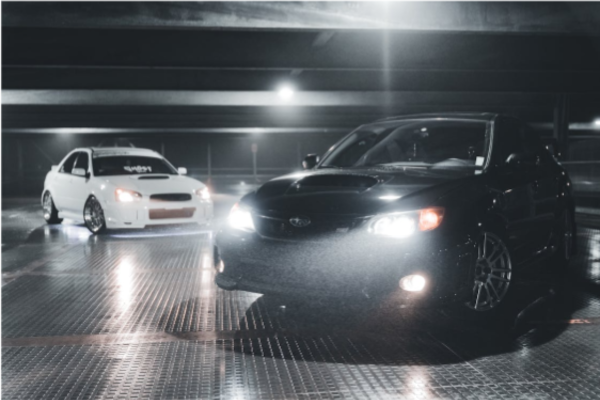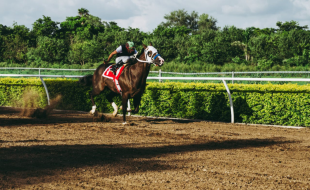Table Of Contents
Why The Subaru WRX Is Still A Track‑Day Legend
Last Updated on: August 21st, 2025
Japanese enthusiasts first experienced the Subaru WRX over thirty years ago. However, the American fans and racers had till 2002 to purchase the vehicle.
Moreover, the WRX has been a staple at many track day events since it was launched in 2002. So, the vehicle has joined a cast of characters that often includes Porsche Boxsters, Mazda Miatas, and Chevrolet Corvettes.
The all-wheel-drive system and extensive racing heritage allow the Subaru WRX to deliver unique performance. The drivers of WRX get an edge over rear-wheel-drive racers.
Keep reading as we explore the origins of this track favorite and dive into key details and track tools that prospective WRX purchasers should consider before ever getting to the starting line.
Rally‑Bred Heritage Meets Track‑Day Capability
The vehicle was built for the rallies; therefore, it has some of the most unique features.
1. Brief History: From WRC To Weekend Track Warrior
The Subaru WRX has its roots in the company’s World Rally Championship program from the early 1990s. Moreover, the turbocharged Impreza WRX (short for “World Rally eXperimental”) was created to compete in the segment. Homologation requirements meant that Subaru had to offer a retail version, giving the public access to genuine performance prowess.
Not resting on these initial laurels, Subaru introduced WRX STI variants that brought motorsport-grade engineering to upgraded transmissions and rally-tuned suspensions.
Although Subaru left WRC in 2008, the original WRX STI’s DNA would continue robust turbocharging, a capable all-wheel-drive system, and rigid chassis architecture.
These features, along with a strong community and aftermarket industry, keep the WRX a preferred Subaru track car platform that won’t break the bank.
2. How A Rally Pedigree Translates To Superior Track Handling
Success on the tarmac or dirt requires a chassis that delivers predictability. Otherwise, racers will concentrate on what’s underneath them instead of who they’re competing against.
Subaru understood this from day one during the development of the WRX. So, it tuned the car’s geometry for stiffness and quick steering response, supported by a suspension optimized for traction.
Engineers also adapted the turbocharged engine for smooth power delivery and controllable acceleration. Moreover, the racers and the experts in the sector considered these to be the essential elements in a competitive setting.
Meanwhile, the Subaru WRX ’s Symmetrical All‑Wheel Drive system maintains stability at peak throttle. The All Wheel Drive system positions itself accurately during mid-corner launches. Moreover, these mid-corner launches with accuracy provide leverage for closed-circuit racing. It’s not unusual to see a lightly modified STI outperform more expensive rear‑wheel drive competitors on tight or technical courses.
All‑Wheel Drive Advantage On The Track
The all-wheel track feature is something necessary these days for the racing segment. However, Subaru WRX’s All Wheel Drive has some added advantages. Here they are.
1. Symmetrical AWD Explained: Why It Excels on the Track
Subaru WRX’s signature Symmetrical AWD system features a longitudinally mounted engine.
The engine is hence aligned with a balanced center differential distributing nearly 50/50 torque to both axles.
As a result, this setup, supported by the low center of gravity from the boxer-style engine, delivers consistent traction while cornering.
Therefore, the Subaru WRX provides an added leverage, compared to rear-wheel-drive vehicles that require consistent throttle management to avoid oversteer.
This predictability enables Subaru drivers to deliver consistent lap performance, especially in temperamental track conditions.
2. Grip And Corner‑Exit Acceleration Benefits
The even torque distribution enables strong corner‑exit performance. Therefore, the AWD system helps the WRX maintain traction where rear‑wheel drive cars might spin or lose speed. Moreover, the performance of the Subaru WRX remains consistent, even on less‑than‑perfect pavement or moderate wet spots.
As a result, this boost off the apex translates directly into lap-time gains. Moreover, many track-day drivers report dramatic performance from stock STI setups once paired with proper street-track tires and suspension tuning.
Thus, combined with turbo power that builds steadily rather than abruptly, the result is a forgiving yet fast platform for enthusiasts.
Top WRX Models & Generations for Track Use Classic WRX STI Vs. Modern WRX—Pros & Cons
From the first Impreza-based WRX for the U.S. in 2002 through the first-generation stand-alone WRX into the late 2010s, the STI boasted features engineered for track use: six-speed manual gearbox, reinforced drivetrains, and torque-vectoring differentials (in later models).
Thus, this enables a more mechanical grip than their ordinary WRX counterparts, which is why they’re so appealing for high-intensity track activities.
Moreover, Subaru WRX switched to its Global Platform, starting with the second-generation WRX in the 2022 model year.
Therefore, this offered improved chassis rigidity, sharper steering, and better NVH (noise-vibration-harshness) controls.
However, the revised front suspension tuning delivers more precise turn-in while electronic driver aids offer refined control.
Hence, these newer editions, including the base WRX variants, are lighter and more agile in theory, but purists will find they lack the track-friendly robustness of early generations. Old-school enthusiasts will likely find old STIs better suited to their preferences.
Meanwhile, the newer WRXs offer the refinement and improved ride quality that make them better for the dual roles of racer and daily driver.
Capturing Your Subaru WRX Track Day Experience
The Subaru WRX also comes with a ton of equipment, which makes your performance better.
1. Camera Mounting Tips for Stable Footage
Video quality is essential for successfully capturing practice runs and competitive laps. Recording equipment secured with suction-cup mounts will likely fail under heavy G-forces, vibrations, and extreme temperatures.
A SUPERMOUNTS system for your WRX or other performance vehicle mounts securely and discreetly to the existing rearview mirror structure. This helps provide stable and clear footage for capturing memorable track day outings.
2. Best Camera Angles Specific to the WRX Interior/Exterior
Determining the best camera placement for an WRX depends on your objectives. A center-mounted interior unit (such as behind the rearview mirror) can capture the hood profile and the track.
You can add a rear-facing camera in the same location to capture your reactions and driving technique.
For an exterior perspective, a side-view camera placed on the front fender provides insights into cornering and other racers.
Combining multiple angles into a single edited presentation is ideal for sharing or an in-depth self-assessment.
Custom-Engineered Camera Mounts for the Subaru WRX
SUPERMOUNTS offers a precision solution for a high-performance camera mount and other devices inside your WRX.
This easy-to-install platform works with the existing mirror housing to provide a factory-like mounting system that won’t interfere with visibility or driving.
Learn more about SUPERMOUNTS at the RoadSpy store. Customer service is also available for support and questions.
Read the RoadSpy Blog to learn more about track day filming, mounting radar detectors, the best track day bargain cars, and more.















